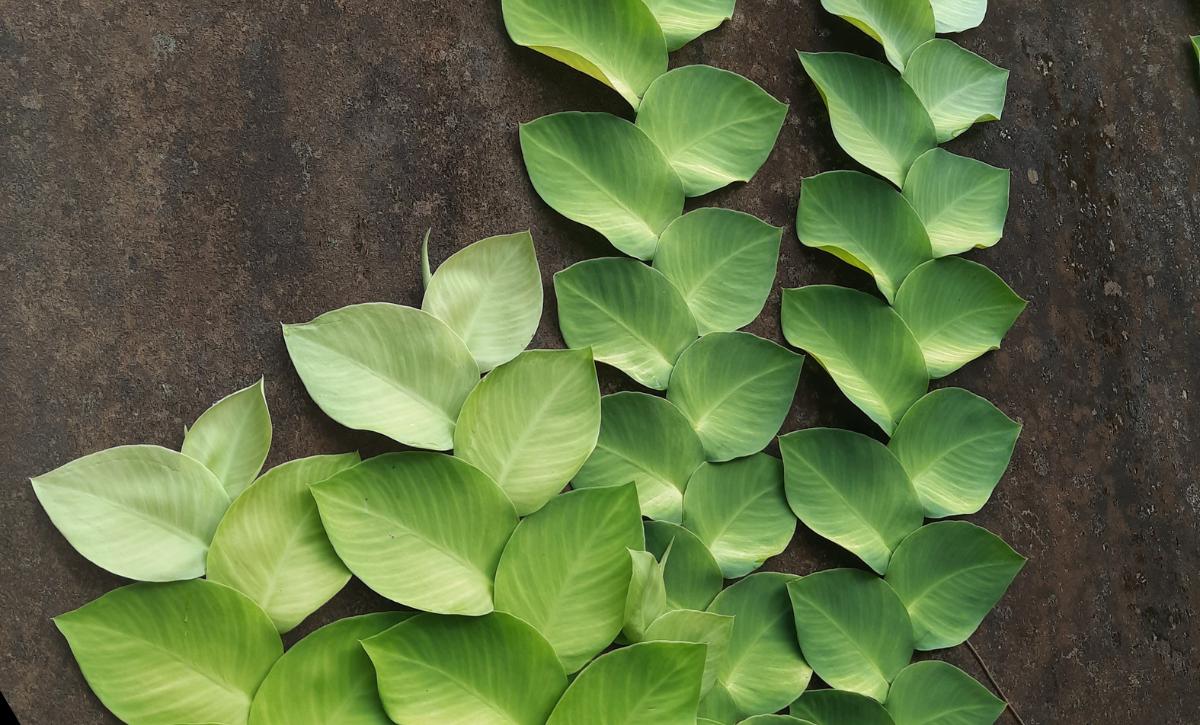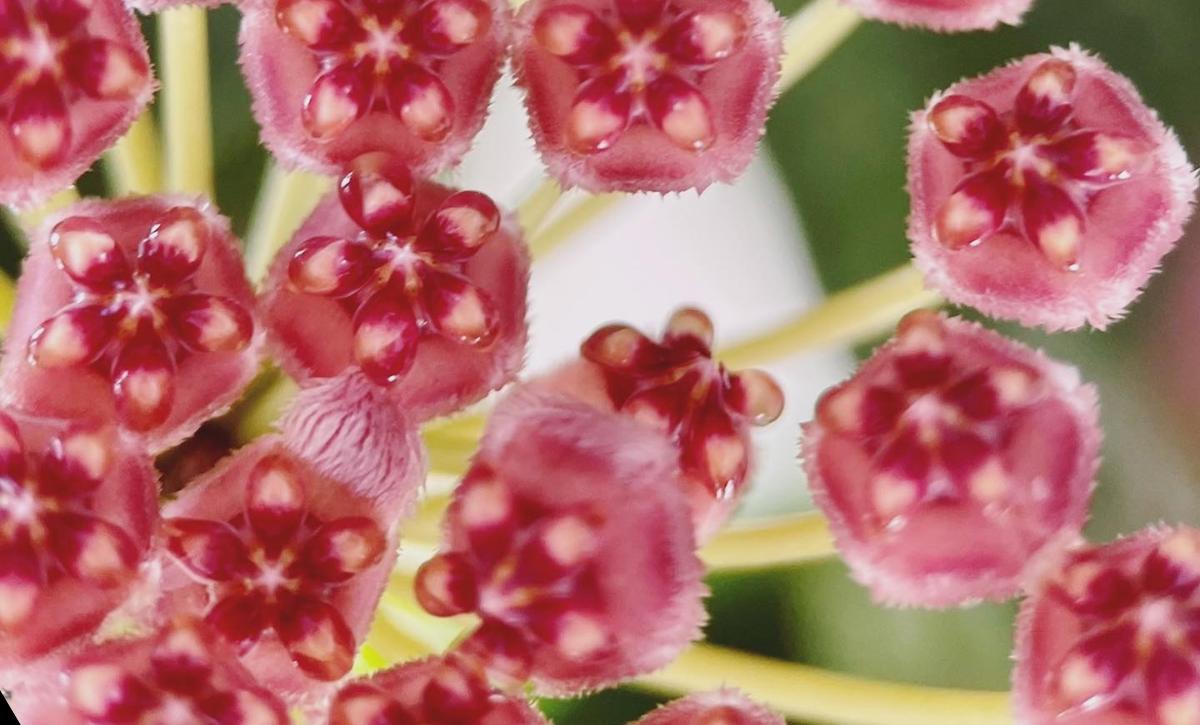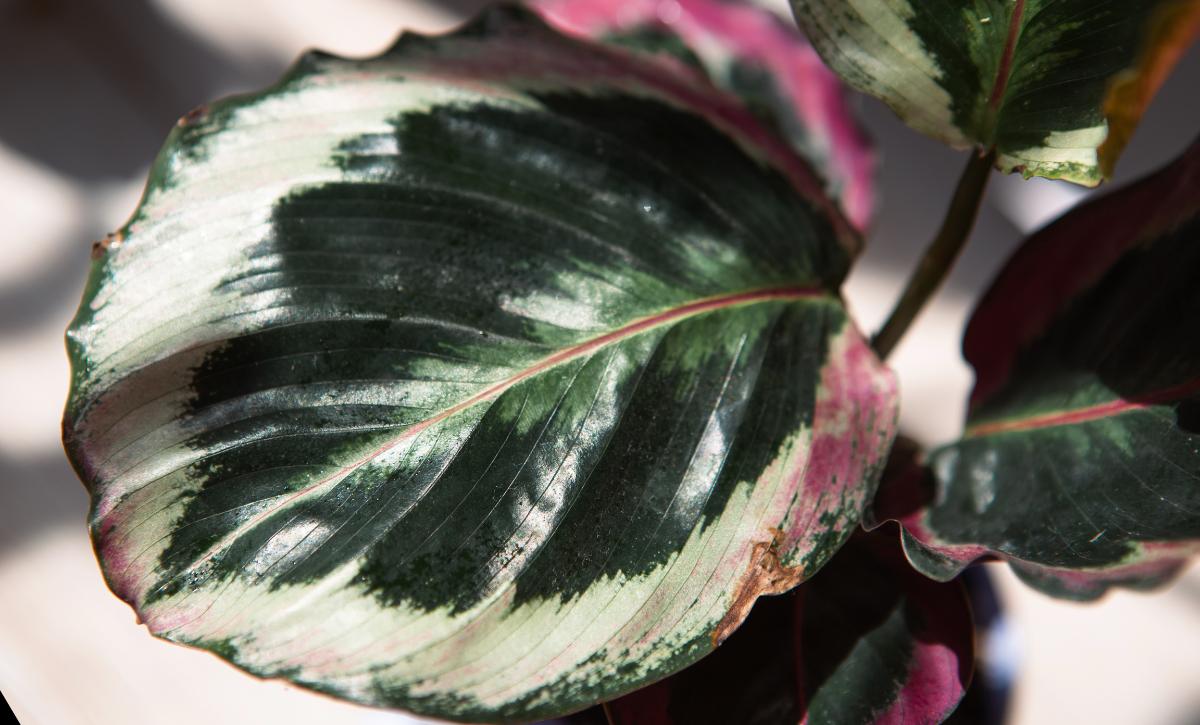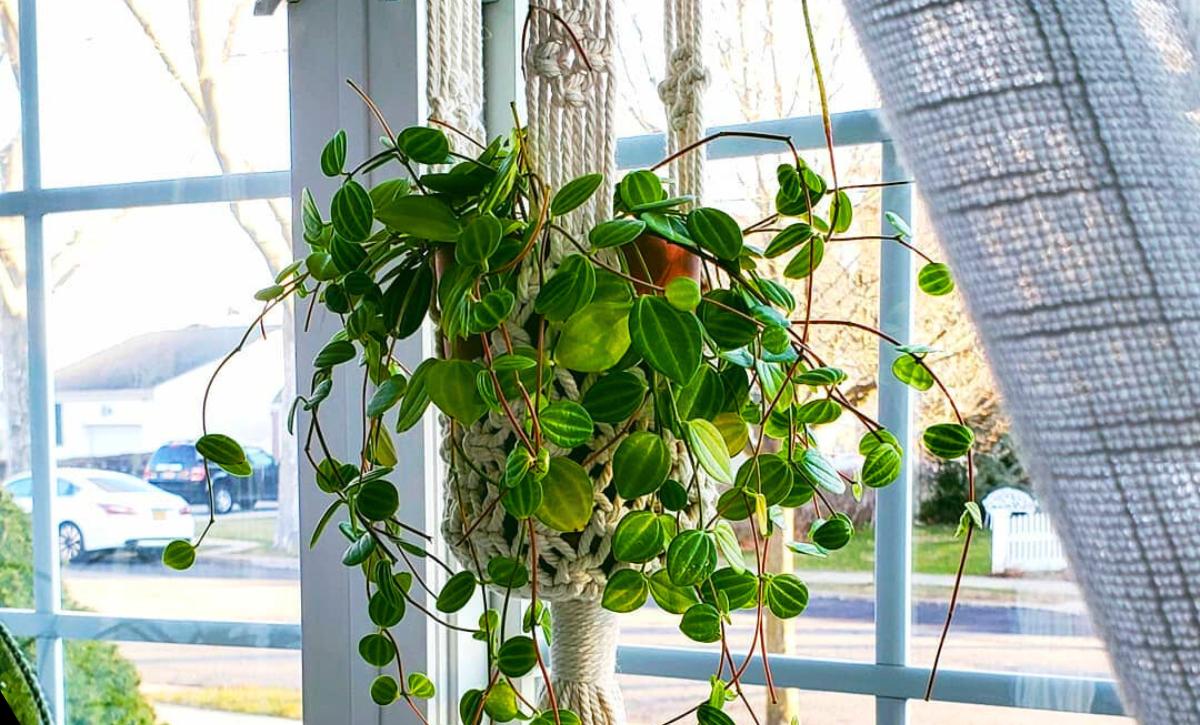Plants are the ultimate interior decor pieces, and today, we have the perfect plant that’ll add texture to your interior design and transform your home: the Boston fern.
The Boston fern has numerous cultivars, which all possess immaculate green fronds. However, the plant we want to share with you is particularly feathery and soft.
The care guide for the Fluffy Ruffle fern has some specific requirements you need to fulfill for the plant to thrive, but it becomes straightforward once you get the hang of it.
To flourish, the plant requires well-draining soil, food, sunlight, and some water!
We’ll also talk about common issues you may encounter while growing this plant and the fantastic characteristics that make people adore this fern.
But first, let’s look at the general information about this plant:
| Scientific name: | Nephrolepis exaltata ‘Fluffy Ruffle’ |
| Native habitat: | French Polynesia, Africa, Florida, Central America, the Caribbean |
| Growth rate: | Slow to moderate growth rate |
| Size: | 1 – 3 feet tall |
| Toxicity: | Non-toxic |
Care Guide for the Fluffy Ruffle Fern
The Fluffy Ruffle fern is a low-maintenance plant that isn’t very demanding. Plant it in a well-draining medium, water it whenever the topsoil feels dry, and ensure it gets some light.
You might need to meet extra requirements to keep this houseplant healthy, but don’t worry. There are shortcuts to getting there we’ll share with you! We’ll look at ways of increasing humidity levels, repotting, and propagation of this fern.
Lastly, pruning and cleaning are essential in the care of the Fluffy Ruffle fern. Therefore, we’ll also discuss these two needs.
The Boston fern is a stunning plant that can be used to enhance both indoor and outdoor gardens. It is also a great option for a variety of budget-friendly zen garden ideas.
You need only pay attention to the climate requirements, and you’ll be good to go!
Light Requirements
This fern is low-light tolerant, making it a perfect houseplant. The plant can also grow outside in warm regions, but you’ll have to keep in mind that direct sunlight can scorch the leaves and destroy their beauty.
To solve this, place the plant in a sheltered place, such as underneath a tree in an east-facing part of your garden. To protect your plant from the afternoon sun, you can always cover it with shade cloth or create artificial shade by manipulating the environment.
Growing the Fluffy Ruffle fern indoors doesn’t need a lot of preparation. Put your plant anywhere with indirect sunlight or near an east-facing window, and it’ll flourish.
The Boston fern is also part of low-light indoor hanging plants. As such, you can also place it in a planter facing north.
Plants need light to grow and thrive, so if you notice your plant has smaller leaves, slow growth, or is losing color, consider getting some artificial lights or gradually moving it to a brighter spot with indirect sunlight.
Water Requirements
This plant benefits from regular watering; you need to irrigate it at least once a week. However, your region’s climate will significantly influence this, so always check the soil before watering.
It would be best to water the Fluffy Ruffle fern after the soil’s top 2 – 3 inches are dry. Check for moisture using a moisture meter or your finger.
Water the plant more frequently during summertime and in hot, arid climates. You can reduce the watering frequency by half during winter since the plant will be dormant and won’t require much water.
The soil takes longer to dry since the summer sun won’t be there to evaporate all the moisture.
Don’t wet the leaves of this fern when watering it since it can cause mold and other unpleasant issues.
Water the plant until you see excess water coming out of the drainage holes, and allow it to completely drain away before emptying the tray.
Humidity Requirements
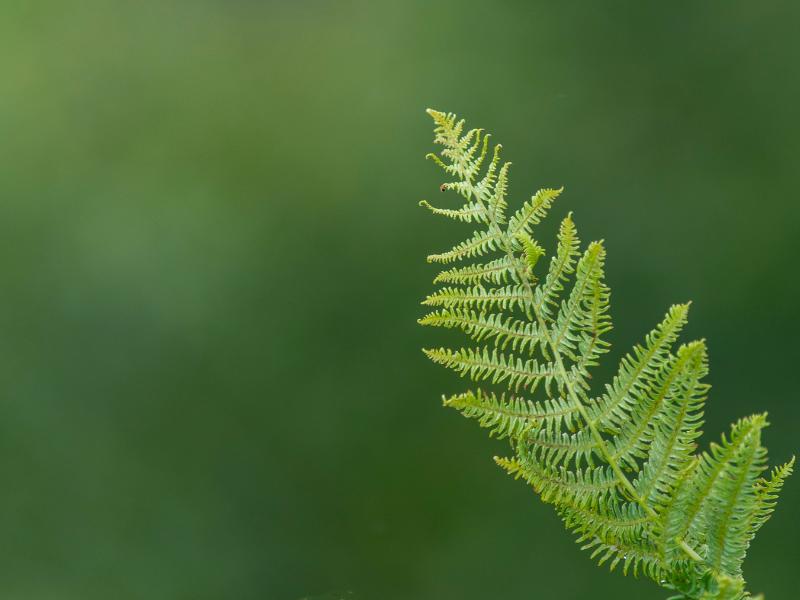
It would always help to consider the preferred moisture levels when caring for your plants. For example, the Fluffy Ruffle fern is a tropical plant that thrives in high humidity (70 – 90%). Therefore, you should raise humidity levels to this range as best as possible.
Fortunately, we have some tricks up our sleeves that require little to no additional work and will work like a charm!
Humidifier
Humidifiers are one of the best methods to raise humidity levels efficiently and quickly. You need only turn it on, and it’ll take care of the rest.
Using pebble trays and grouping plants is less reliable than a humidifier since they can’t drastically raise the air moisture.
For instance, you can increase the humidity by 7% using gravel trays, which is ideal for small plants but not larger ones, particularly in drier climates.
Misting
Spraying your plants occasionally doesn’t require too much work, and it’s a foolproof method of increasing humidity!
However, be careful not to overdo it, or you’ll create more problems for yourself. For example, constantly wet leaves encourage the growth and reproduction of fungi, which can result in powdery mildew and leaf spot.
Luckily, you can avoid these issues by spraying this fern every 2 – 3 days and letting the leaves dry between misting.
Terrarium
Growing this plant in a terrarium is a great way to create a perfect environment for its development and improve your interior decor.
The glass walls retain moisture, which raises the humidity levels around your plants.
You don’t need to water closed terrariums more than once a month. Open the lid after a few weeks to let some fresh air in, and your Fluffy Ruffle fern will be okay.
Temperature
You can grow this plant outside if you live in a region in USDA zones 9 – 11. Accompany the plant with other fantastic evergreen ferns in the warm weather to create a breathtaking outdoor masterpiece!
Frost can kill this above-the-ground plant. However, it will bounce back come spring with new fronds.
If you live in a colder climate, it’s advisable to keep your plant indoors all year round or move it indoors when the weather starts to cool.
Room temperatures are ideal for this fern, so anything between 60 – 80℉ will be okay. Keep your thermostat at least 60℉ since temperatures lower than 50℉ can kill your plant.
Avoid keeping the plant near heaters, drafty windows, and AC vents because sudden temperature swings can cause its leaves to fall off.
Soil Requirements
This plant is convenient to grow because you can use ready-made potting mix blends, eliminating the need to make your own.
Nonetheless, knowing the type of soil this fern prefers is essential, and having the know-how to make one can come in handy when you’ve exhausted all other options.
This plant requires a fast-draining growing medium; otherwise, the soil will get clogged with water, leading to root rot.
The Fluffy Ruffle prefers slightly acidic soil with a pH of 5.0 – 6.5.
Now, you can use this information we’ve disclosed to make the preferable soil mix and provide your plants with an ideal environment.
Mix equal parts potting soil, perlite, and sphagnum peat moss. You can also add some sand for gardening. However, don’t put too much since your mix will become too draining, and you’ll have to water your fern constantly!
Fertilizer
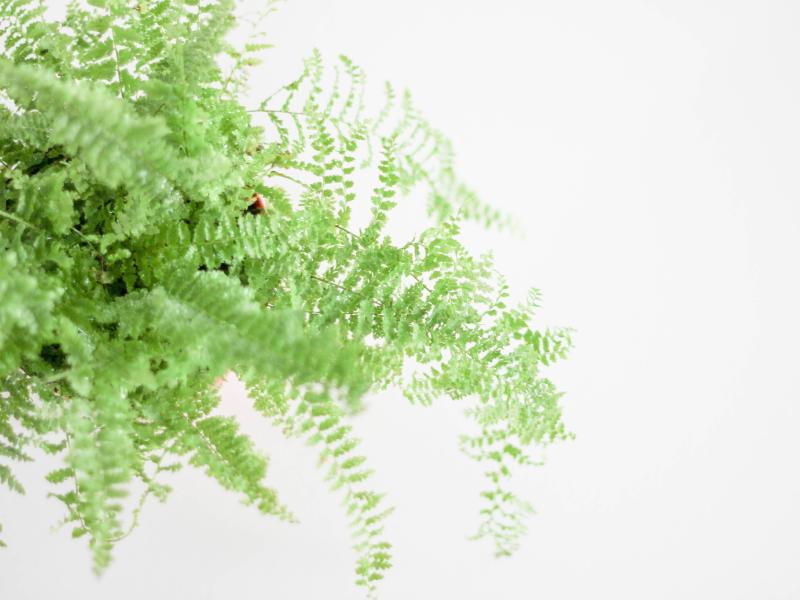
This plant needs monthly fertilization, but it doesn’t have to be such a tedious task. Feed your Fluffy Ruffle when watering it to minimize the amount of work you should do.
Another advantage of having this plant is that you can feed it with a regular houseplant fertilizer. Dilute your fertilizer to half-strength or according to the manufacturer’s instructions on the package.
Most growers prefer slow-release fertilizers since a small amount can last 6 – 12 months when applied, depending on the strength of the fertilizer and the plant’s needs.
Repotting
This plant requires repotting every two years, even though it’s a slow grower. Replant it in a new pot 1 – 2 sizes bigger than the old one if it hasn’t reached its mature height yet.
You can leave your plant in the same pot if it hasn’t grown much since you last repotted it. However, you’ll have to use a new substrate.
A fresh growing medium is essential for adding more nutrients; your plant will appreciate it after repotting it.
Loosen the soil around the plant and carefully remove it when repotting or transferring it to a new container.
Put your plant in a new or old pot filled with fresh potting mix. Cover the roots with more soil and water it well.
Ensure your plant is well-hydrated to avoid transplant shock after moving it to a different container and medium.
Propagation
This care guide can’t be complete without its propagation guide, so we’ll look at the most straightforward way to propagate the Fluffy Ruffle fern and gift your friends a fantastic new plant!
Step 1: You can propagate this fern by offsets. As such, find a healthy offset and carefully separate its roots from the mother plant.
Pro tip. Use sterilized pruning shears or a sharp knife to cut the roots if you are unable to divide the plant quickly.
Step 2: Plant the plantlet in a nursery pot filled with fresh substrate and water it well. To provide your new plant with the best growing conditions, the soil moisture should be consistent.
Step 3: To keep the humidity levels high and prevent moisture loss, which is essential for proper development, place a plastic sheet or humidity dome over your plant.
Step 4: Place your new fern in a spot with bright indirect sunlight and ensure the temperature is between 60 – 70℉.
Step 5: Once the plant starts growing, take off the humidity dome or plastic sheet. Give your plant the exact care requirements as your previous one.
Cleaning and Pruning
Pruning and cleaning are critical parts of plant care, but are frequently overlooked, particularly cleaning.
When dust sits on your plant’s leaves, it disrupts the photosynthesis process, which causes your plant to experience problems.
Put your plant under a slow, lukewarm water flow to remove the dirt. You can pat dry the leaves if you fear your plant might catch a fungal disease.
Pruning is an excellent way of strengthening your plant; yes, that’s right! Removing dead, old, discolored, and diseased leaves helps your plant to recover energy and creates new space for new leaves to grow.
New leaves are better photosynthesizing and produce more food and energy essential for development than old and dying foliage.
Common Issues with the Fluffy Ruffle Fern
You can find the Fluffy Ruffle fern in various plant collections and is an excellent companion to pothos and philodendron plants.
Similar to other evergreen plants, this fern is also susceptible to diseases and pest infestations. As such, knowing the advantages and disadvantages of copper fungicide and neem oil can be helpful.
For example, copper fungicide is more effective in quickly eliminating fungi from plants than neem oil. However, neem oil can be used to eliminate fungi as well as pests.
You need to decide which product will fit your preferences regarding the plant.
The following section will highlight various diseases and pests that affect this fern to help you treat your plant.
Pests
Scales and spider mites are the most common pests that affect this plant, and even though they are very dangerous, they’re also easy to deal with.
Move your Ruffle Fern away from your other plants when you notice a single bug to avoid spreading the infestation.
If there are few pests, use a Q-tip dipped in neem oil or rubbing alcohol to eliminate them quickly. However, a significant pest infestation will need more effective methods such as pesticides.
You can also clean the dust on your plant by putting it under a stream of running water. However, you’ll have to resort to insecticides if that doesn’t work.
Diseases
Root rot is the most common disease that affects this plant. Root rot is a deadly infection, and you must be very cautious!
This fungal disease is caused by overwatering, and it affects the plant’s roots by limiting their ability to uptake nutrients and water.
That’s why plants suffering from root rot stop growing, start to droop, and become brown or yellow, or their color fades.
Check the soil if you notice these signs. If it’s wet, take your Fluffy Ruffle fern out of its pot and carefully inspect the roots.
Dispose of the dark and mushy roots, spray the remaining roots with a fungicide, and repot the plant in a sterilized container with fresh substrate.
You can save your plant by propagating some healthy parts if the disease has advanced and already spread to the plant’s stem.
Main Features of The Nephrolepis Exaltata

The easy care guide for this plant will make an excellent addition to your green army!
The plant has bushy and silky leaves, and once you see them, you’ll realize what a drought-loving succulent it is.
Tripinnate fronds are pointed at the end and grow in dense clumps.
This plant produces sterile spores that can’t be used for reproduction. However, there’ll always be enough offsets to grow and have new plants for your hanging baskets.
Commonly Asked Questions

Now that we’re finished with the care guide for this fern, let’s look at the answers to commonly asked questions to improve your knowledge further.
What does wilting indicate in a ruffle fern?
Wilting and drooping of the ruffle fern are usually caused by overwatering, so you must look for underlying issues.
Your first thought about the cause might be frequent watering, but that’s not always the case. Pots without drainage holes and heavy soils can cause water clogging, even as you water your fern once weekly.
Water that collects in the tray is another thing we often overlook. After irrigating your plant, don’t let it sit in a tray filled with water.
Fortunately, you can easily fix these problems.
To keep your fern healthy, you can either repot it in fresh, well-draining substrate and a pot with drainage holes, or water it only when the topsoil feels dry.
Keep in mind you have to empty the tray 30 minutes after watering, at most.
Overwatering can also cause root rot, stunted growth, and yellow leaves, so dealing with it before these issues arise is better.
What are the benefits of the Nephrolepis exaltata?
The air purifying ability of this plant is one of its main benefits, so you’ll have a beautiful-looking plant and fresh air in your home.
Obviously, you’ll need a couple of other plants to effect some noticeable change, but they’re still wondrous and will heal your psyche.
Gardening and plants have been proven to reduce depression, anxiety, and stress.
You can introduce these plants into your zen gardens and create the perfect relaxation nook.
Final Remarks
The Fluffy Ruffle fern has a simple care routine: feed your plant once monthly and provide it with mild temperatures, high humidity, moist and well-draining soil, and indirect sunlight.
This fern is slow-growing, so repotting will only be once yearly.
You need only prune any leaves that aren’t looking their best and wipe the dust off the triangular leaves, and you’ll have a healthy-looking plant!
We’ve also discussed some common diseases and pests you may encounter when growing this fern and the remedies that’ll keep your plant healthy in no time!
The article also included the main features of this plant to give you an idea as to why the plant is loved by many.
That’s all for now, bye!

